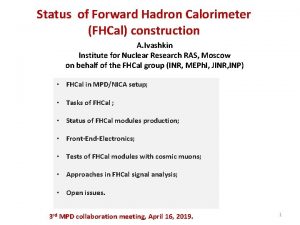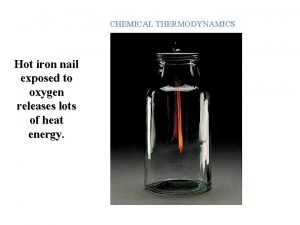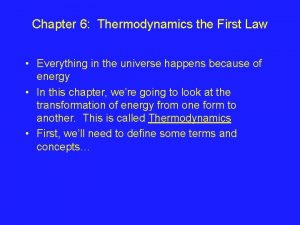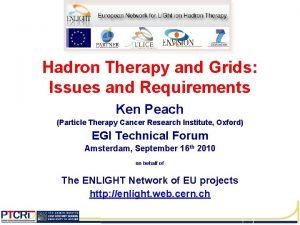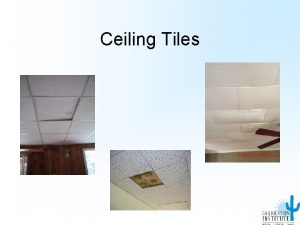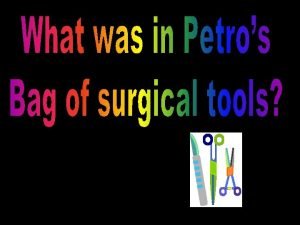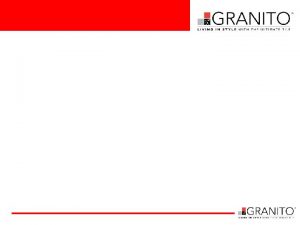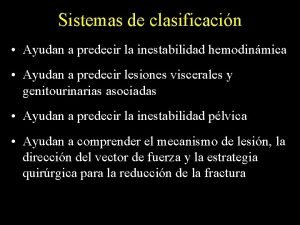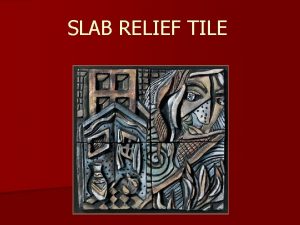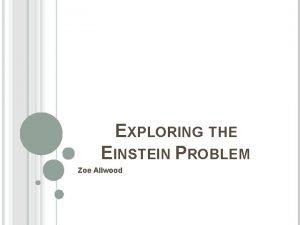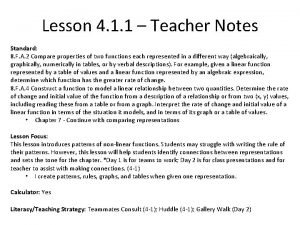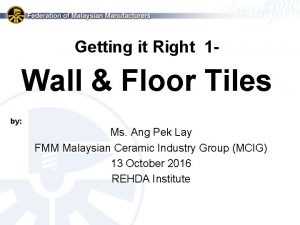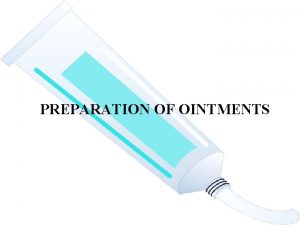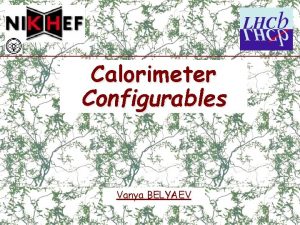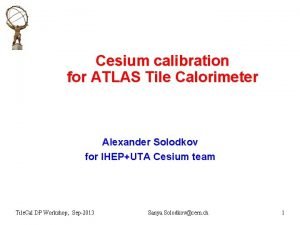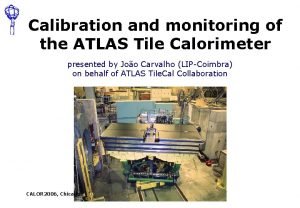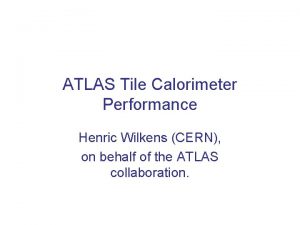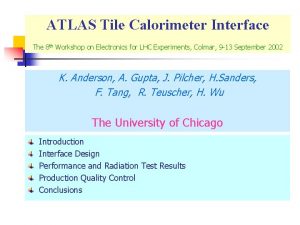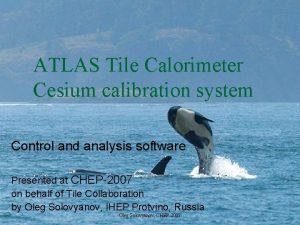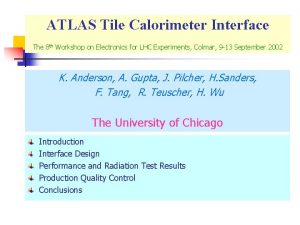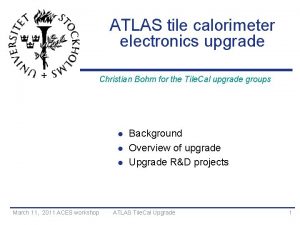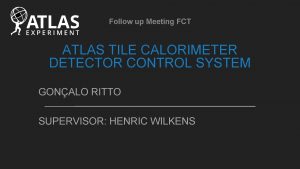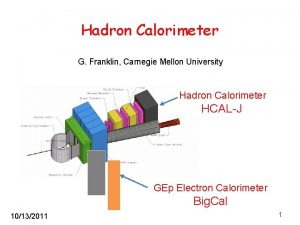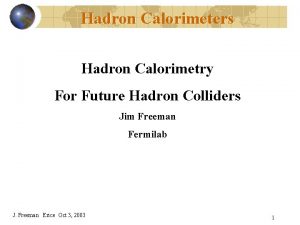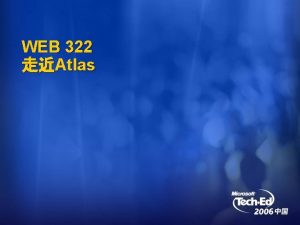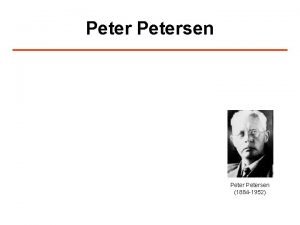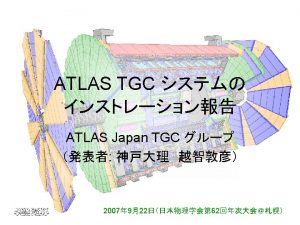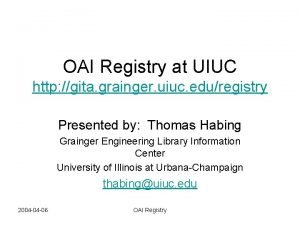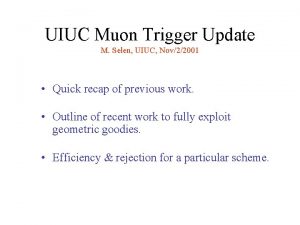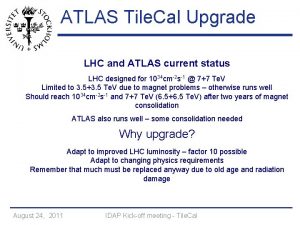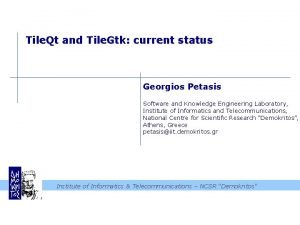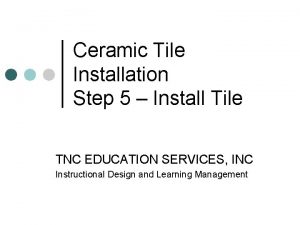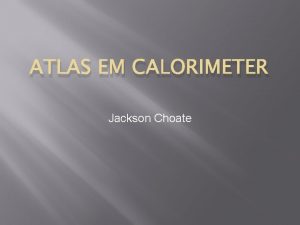ATLAS Tile Hadron Calorimeter at UIUC Dave Petersen





















- Slides: 21

ATLAS Tile Hadron Calorimeter at UIUC Dave Petersen, North Park University Working under HEPG Prof. Steve Errede

What, Who and Where? • A Toroidal Large Hadron Collider Apparatus (ATLAS) Detector • Over 30 countries involved, from Armenia to the United States (over 30 U. S. institutions are participating) • To be built at CERN, near Geneva, Switzerland

What is the LHC? • A proton will be colliding with another proton • Will achieve energy of 14 Te. V, most energetic collider in the world

ATLAS: A Five Story Detector • Red line is the beam pipe • Pink is the tracking detector • Gray is the Solenoid Magnet • Yellow is the Electromagnetic Calorimeter • Green is the Hadron Calorimeter • Gray tubes are muon torodial magnet • Blue is the muon detector

What is UIUC doing for ATLAS? • UIUC is one of 5 institutions working on the Scintillating Tile Hadron Calorimeter – Produce ~200 full-size Submodules – Test ~3, 000 Photomultiplier Tubes

What is a Module? • 64 Full Modules required for Tile. Cal • Each Module is composed of 8 full-size submodules, one half-size and one quartersize.

How does the Tile. Cal work? • Steel absorbers separated by tiles of scintillating plastic • When the Hadronic shower, hits the scintillating tiles, they emit light in an amount proportional to the incident energy • Fiberoptics connected to the tiles carry the light to PMTs

Production of Submodules • UIUC wants to finish production by May of 2002 • Currently have 49 complete • Looking to improve efficiency of operations -one of the biggest problems is the cleaning of the plates that has to be done by hand • Over 10 miles of steel required for 192 submodules

Quality Steel from the Czechs • Notice the grease on these plates • Every single plate must be washed by hand • There are 192 spacers plates and 32 master plates per submodule that must be washed

Stamped, Not Laser-Cut • Spacers are. 004 in. thinner than design qualifications • The Tile. Cal design calls for submodules must be within. 002 in. • So we place. 004 in. stickers on each individual spacer before we glue

Gluing • Takes a little over 2 hours to stack and glue one submodule • Use glue machine which requires over 8, 000 lines of code • Prof. Errede desires to break the 2 hour barrier (his own version of the 4 minute mile)

Quality Control • After welding, various measurements must be taken to ensure that each submodule meets the design requirements • We must also check each individual slot for the tiles to make sure the tiles will fit

Analysis of Quality Control • Here is a 3 D graphical view of the average submodule heights broken up by points

Painting - In order to rustproof • Toxic paint from the Czech Republic is used to “rustproof” the submodules • Takes over 3 days to dry • Excess paint must be ground off

Ready to Ship • These submodules are ready to go to Argonne, where they will be assembled into a full module

PMT Testing • UIUC will perform test on the PMT’s that will measure – PMT Performance – PMT Rate Dependence – PMT Drift/Stability/Aging Studies • UIUC will receive testing boxes shortly

Test Each PMT Twice • Using Lab. View, UIUC will test each Hamamatsu R-7787 PMT twice, once in the Dark box and once in the Light box – Test 1 will use DC Light • Test 20 PMTs per 2 days – Test 2 will use Pulsed Light • Test 20 PMTs per day

What will ATLAS show us? • The measurements taken using ATLAS will hopefully help explain these theories – Higgs Particle and Field – Grand Unified Theory

Higgs Particle and Field • Higgs field is almost indistinguishable from empty space • All of space is filled with this field, and that by interacting with this field, particles acquire their masses. • Particles that interact strongly with the Higgs field are heavy, while those that interact weakly are light.

Grand Unified Theory • Physicists hope to unify the weak, strong, and electromagnetic interactions

Thanks To • Dr. Steven Errede • Dave Forshier • And Fred Cogswell, who when I invited him to attend this talk gave me this response
 Hadron calorimeter
Hadron calorimeter Coffee cup calorimeter formula
Coffee cup calorimeter formula Capacity to do work is called
Capacity to do work is called Coffee cup calorimeter vs bomb calorimeter
Coffee cup calorimeter vs bomb calorimeter Atlas uiuc
Atlas uiuc Hadron collider
Hadron collider Hadron collider
Hadron collider Lhc tantalizing new physics
Lhc tantalizing new physics Hadron
Hadron Osha ceiling tile requirements
Osha ceiling tile requirements Tile cautery
Tile cautery Homogeneous tile granito
Homogeneous tile granito Clasificacion de tile
Clasificacion de tile Topaz mohs scale
Topaz mohs scale Timurid tile
Timurid tile What are style tiles
What are style tiles Low relief tile
Low relief tile Socolar taylor tile
Socolar taylor tile Tile pattern team challenge answers
Tile pattern team challenge answers Ceramic tile classification
Ceramic tile classification Monotonic routing
Monotonic routing Preparation of ointment
Preparation of ointment
